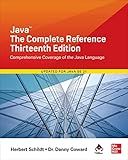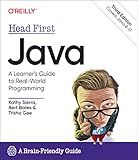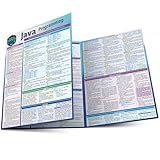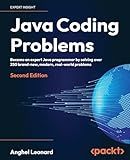Best Java Programming Books to Buy in January 2026

Java: The Complete Reference, Thirteenth Edition



Java for Beginners: Build Your Dream Tech Career with Engaging Lessons and Projects



Head First Java: A Brain-Friendly Guide



Java All-in-One For Dummies



Java Programming Language: a QuickStudy Laminated Reference Guide



Java: The Comprehensive Guide to Java Programming for Professionals (Rheinwerk Computing)



Java Coding Problems: Become an expert Java programmer by solving over 250 brand-new, modern, real-world problems


In Java, a constructor is a special method that is used to initialize objects of a class. It has the same name as the class and does not have a return type. It is commonly used to set initial values for instance variables or perform any necessary setup tasks when an object is created.
To write a constructor in Java, you simply define a method with the same name as the class and include any required parameters inside the parentheses. This method should be declared as public and can also be overloaded to have multiple constructors with different parameters.
You can also use the "this" keyword to refer to the current object within the constructor. This is useful for distinguishing between instance variables and parameters with the same name.
Constructors can also call other constructors using the "this" keyword followed by the necessary parameters. This allows for reusing code and maintaining consistency in object initialization.
Overall, constructors are a fundamental concept in Java programming and play a crucial role in object creation and initialization. By understanding how to write and use constructors effectively, you can build robust and well-structured Java programs.
What are the types of constructors in Java?
- Default constructor
- Parameterized constructor
- Copy constructor
What is the difference between a constructor and a method in Java?
In Java, a constructor is a special type of method that is used to initialize an object. It has the same name as the class and does not have a return type. Constructors are called automatically when an object is created using the new keyword.
On the other hand, a method in Java is a block of code that is used to perform a specific task. It can have any name and can have a return type or can be void. Methods are not automatically called when an object is created and need to be explicitly called to perform their task.
In summary, the main differences between a constructor and a method in Java are:
- Constructors are used to initialize objects, while methods are used to perform tasks.
- Constructors have the same name as the class and do not have a return type, while methods can have any name and can have a return type or be void.
- Constructors are automatically called when an object is created, while methods need to be explicitly called to perform their task.
What is a constructor overloading in Java?
Constructor overloading in Java refers to the ability to define multiple constructors within a class with different parameters. Each constructor will have a different signature, i.e., a different number or type of parameters. When an object of the class is initialized, the appropriate constructor is invoked based on the arguments passed during object creation. This allows for more flexibility and versatility in creating objects of the class.
How do you create a default constructor in Java?
In Java, a default constructor is a constructor that does not have any parameters. It is automatically provided by Java if no constructor is explicitly defined in a class. However, if you want to create a default constructor explicitly in a class, you can do so by simply defining a constructor with no parameters.
Here's an example of how you can create a default constructor in Java:
public class MyClass {
// Default constructor
public MyClass() {
// Constructor code here
}
public static void main(String\[\] args) {
// Creating an object of MyClass using the default constructor
MyClass obj = new MyClass();
}
}
In this example, the MyClass class has a default constructor that takes no parameters. When an object of MyClass is created using new MyClass(), this default constructor will be called to initialize the object.
How do you create a constructor with multiple parameters in Java?
To create a constructor with multiple parameters in Java, you simply define the constructor with the parameters you want to pass to it. Here's an example:
public class MyClass { private int param1; private String param2;
public MyClass(int param1, String param2) {
this.param1 = param1;
this.param2 = param2;
}
// You can also add other methods to your class here
}
In this example, the MyClass constructor takes two parameters - an integer param1 and a string param2. When you create an object of MyClass, you can pass values for these parameters to initialize the object:
MyClass myObject = new MyClass(10, "Hello");
How do you define a constructor in Java?
A constructor in Java is a special type of method that is used to initialize an object of a class. It has the same name as the class and does not have a return type. When an object of a class is created, the constructor is automatically called to initialize the object's state. Constructors can have parameters to pass values to initialize the object's state.
